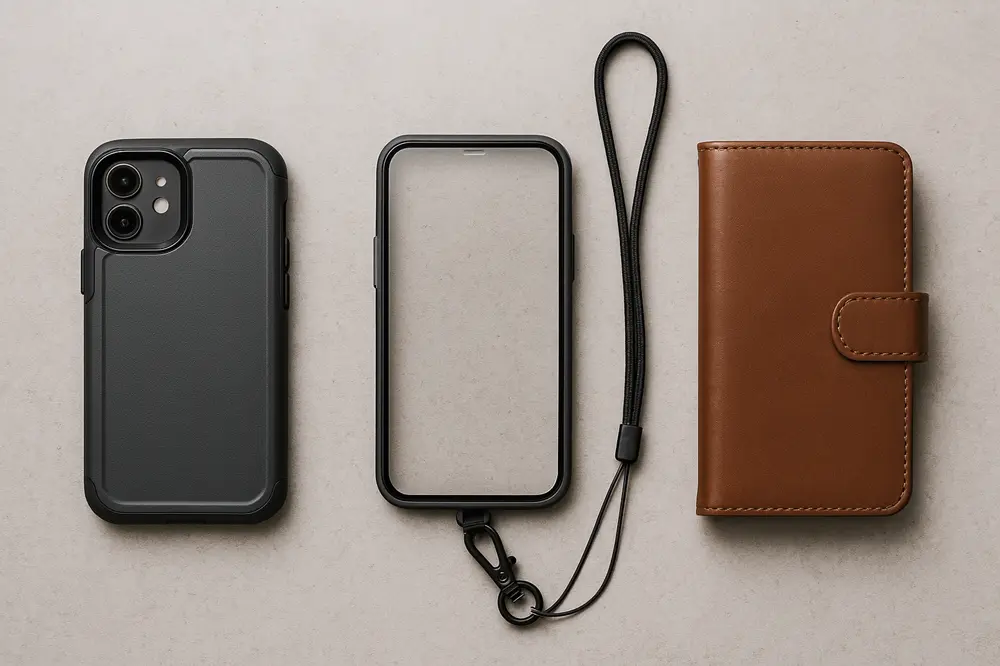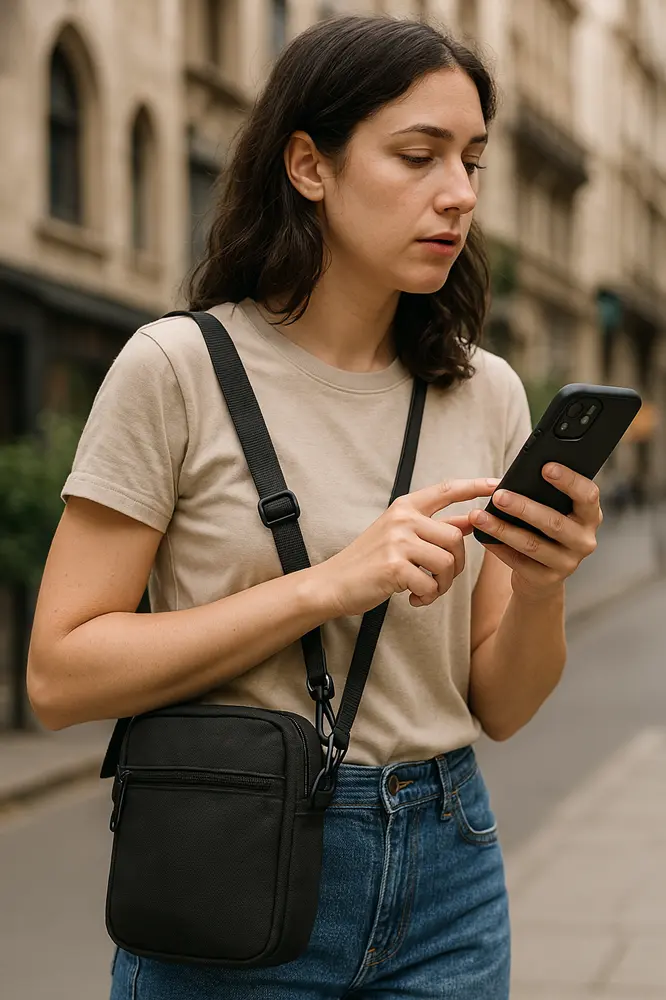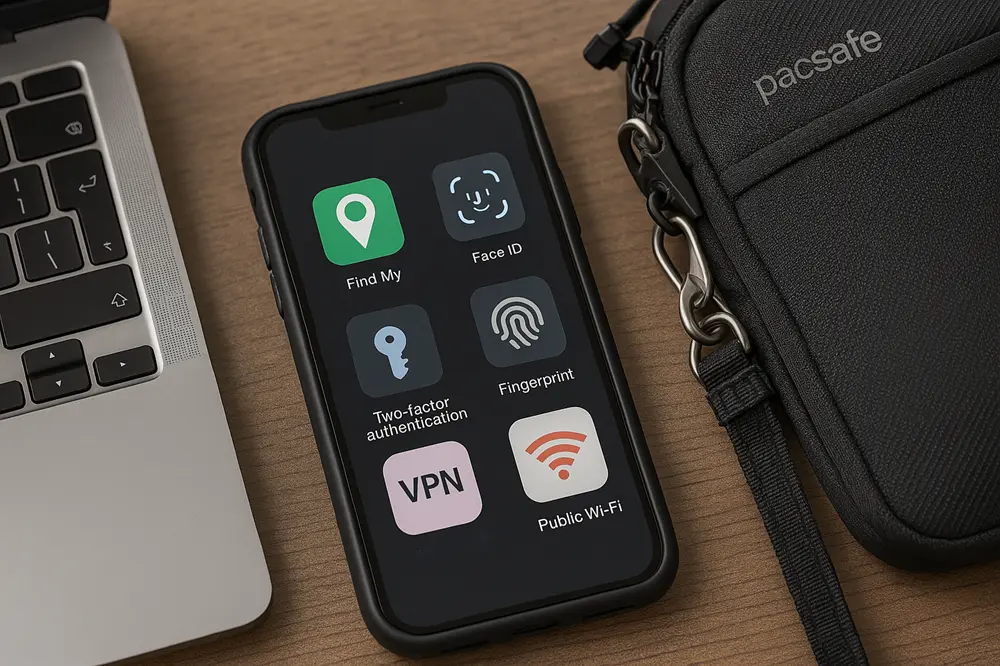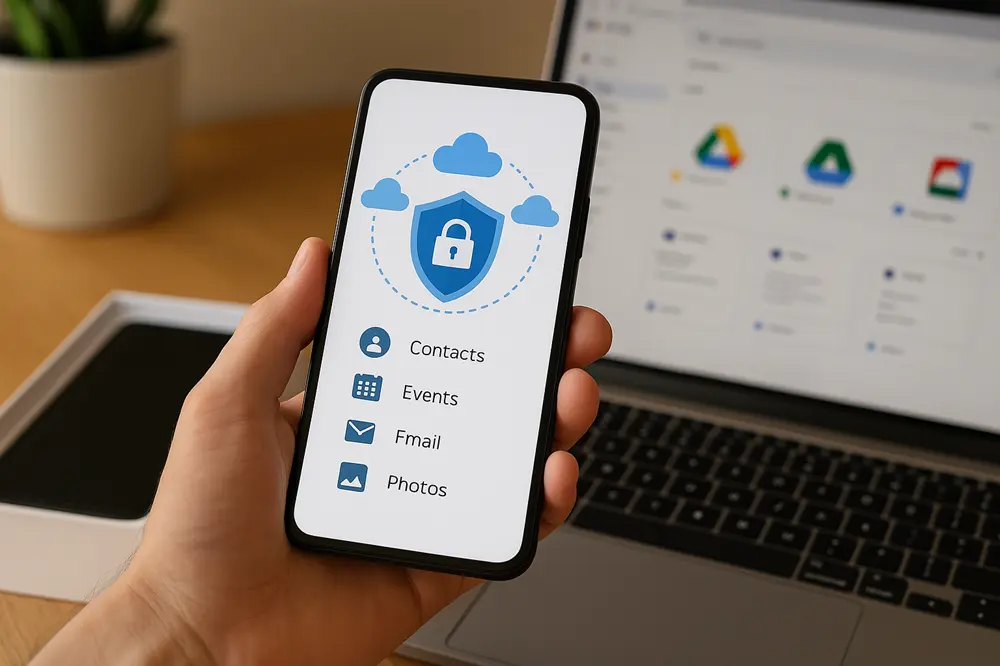You’re exploring a city halfway across the world, your phone guiding you through winding streets and bustling squares. One second, it’s in your hand—then suddenly, it’s gone. Panic sets in. Your maps, photos, contacts—all of it, just vanished. You feel disconnected, exposed, and honestly, a little helpless.
Traveling with your phone isn’t just about having a gadget on hand; it’s about staying connected, safe, comfortable, and organized. Your phone is your lifeline, your navigator, your on-the-go booking tool. Losing it while traveling doesn’t just mean losing a device—it means losing your sense of direction, your way to communicate, your access to vital information.
The reality is, keeping your phone secure while keeping it handy is a balancing act. On one hand, you want to protect it from theft, loss, and damage. On the other hand, you need it within reach—no point in having the world’s best phone case if you can’t easily pull out your device to check directions.
According to a 2023 report by Crisis24, around 1.4 million phones were stolen in the United States alone, highlighting just how real the risk is when you’re on the move. The good news? You don’t have to live in constant worry or feel like you’re guarding a treasure chest. Here’s how to keep your phone safe and accessible while traveling.
Gear Up with Travel-Proof Accessories

Let’s be honest—your phone takes a beating when you’re on the go. Whether you’re trekking through dusty trails or navigating crowded subway stations, one slip can mean a cracked screen or worse. Gear up the right way, and you won’t have to worry about a single drop ruining your entire trip.
Start with the basics: a reliable phone case. Your case shouldn’t just look good—it needs to perform. Go for something that balances protection and portability. Shockproof and water-resistant are your magic words here. You want something that’s tough enough to survive a fall yet sleek enough to fit in your pocket. The OtterBox commuter series case nails that balance. It’s built for durability without being bulky—perfect for travelers who want protection without carrying a brick.
Next, think about your screen. It’s the most vulnerable part of your phone and often the first to suffer in a mishap. 9H screen protectors are your best bet—durable, scratch-resistant, and still responsive to touch. Plus, if it does take a hit, it’s far cheaper to replace a cracked protector than an entire screen.
Then there’s the hands-free game. Ever tried holding your phone while dragging luggage through an airport? Not ideal. Equip yourself with a protective case that has a crossbody strap, lanyard, or phone tether—something that keeps your phone secure but accessible.
Finally, consider phone accessories that do double duty. A detachable leather wallet case is a smart pick—they hold your cards, cash, and phone in one place, cutting down on clutter. The less you have to juggle, the better.
Move Smart and Keep Your Phone Off the Radar

It’s not just what you carry—it’s how you carry it. Flashing your phone around in unfamiliar places? That’s an open invitation for trouble. The trick is to be low-key while keeping your device accessible.
Start with strategic placement. Your phone belongs in front pockets, not back ones. A shoulder bag with a zipper closure and multiple compartments is your best friend—harder to snatch, easy to keep close. But don’t get too comfortable—just because it feels secure doesn’t mean you should let your guard down.
Tourists often get targeted because they stand out, and a flashy iPhone or premium Android phone makes you an easy mark. Use your device purposefully—check your map discreetly in a quiet spot instead of stopping in the middle of a busy street.
A quick word on cultural awareness: in some countries, openly displaying your phone can be interpreted as a sign of wealth. Be mindful of local customs, and keep your phone usage subtle.
And here’s a solid habit: whenever you use your phone in public, take a second to scan your surroundings. Awareness is your first line of defense.
Secure Your Phone with Smart Features

Your phone already comes packed with security features—you just need to activate them. Start with tracking. Set up “Find My iPhone” or “Google Find My Device” before you leave. It takes minutes but can save you from hours of panic. If your phone goes missing, you’ll be able to track its location, lock it remotely, or even erase your data if necessary.
Data security is non-negotiable. Use two-factor authentication (2FA) for any app that holds sensitive info—banking, crypto wallets, email, social media. Face recognition or fingerprint locks add an extra layer. Don’t rely solely on a PIN—it’s too easy to guess, and auto-saving passwords can put your accounts at risk if your phone is lost.
Now, about public Wi-Fi—it’s a goldmine for hackers. In 2023, a Statista report found that 25% of adults in the U.S. had their private information compromised through public Wi-Fi networks, especially in cafes, airports, and hotels. That’s a huge risk when you’re traveling.
To counter these risks, using a VPN is one of the smartest moves. Look for one with strong encryption (like AES-256) and a no-log policy to keep your data private. Top-rated options include ExpressVPN, NordVPN, and Surfshark. Setting up a VPN on your phone is simple—download the app, log in, and turn it on. For extra security, enable auto-connect so your VPN activates whenever you join a public network.
And for peace of mind, consider a secure bag like the Pacsafe LS200 anti-theft crossbody. It’s got RFID-blocking pockets, cut-resistant materials, and lockable zippers. Smart, well-made, and tough to mess with—exactly what you want when traveling internationally.
Be Ready If Your Phone Disappears

Sometimes, despite your best efforts, things still go south. Even if you’ve done everything right, your phone might still get lost or stolen during travel, so it’s smart to have a backup plan.
Transfer your important contacts, documents, personal photos, and videos to a secure cloud service like Google Drive or iCloud before you leave. That way, if your phone disappears, your memories and information don’t go with it.
Carry a spare phone or a local SIM card as a precaution. Even a cheap model can be a lifesaver when your primary device is gone. Also, keep a list of emergency numbers, including your carrier, local police, and embassy, along with your phone’s ICCID (Integrated Circuit Card Identifier) and IMEI (International Mobile Equipment Identity). That way, you won’t be scrambling if something happens.
If the worst does happen, don’t hesitate—report it immediately. Notify your carrier to disable the phone and protect your data. If it’s stolen, file a police report—it’s crucial for insurance claims and might help in recovery.
Final Thoughts
Your phone is more than just a device—it’s your travel companion. Keeping it secure while staying connected doesn’t have to be a chore. With the right gear, smart habits, and proactive tech use, you can explore freely without the constant worry of losing your lifeline.
Ready to make your next trip stress-free? What’s your best strategy for keeping your phone safe and accessible on the go?
